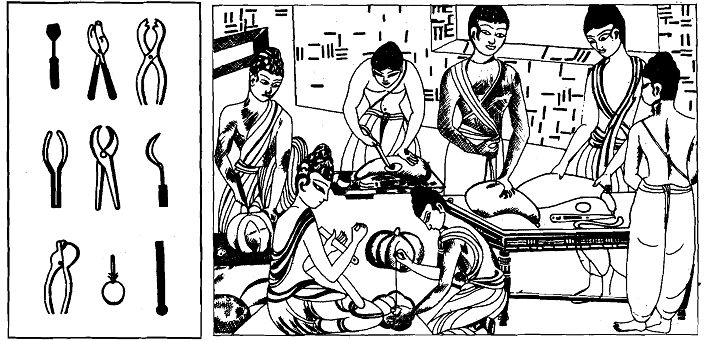Surgery:
Susruta-Samhita, a.major treatise on surgery, was derived not only from exhaustive observation of symptoms of diseases and their possible treatments but also a fairly detailed knowledge of human physiology, anatomy, and especially the internal organs. For example, in treating ulcers or wounds, it is directed that the instruments should be introduced with the precaution of avoiding dangerous places, such as veins, bones and the like, until the pus is visible. In the Sarnhita there is also detailed description of different types of iron instruments, made by local smiths for extraction, cutting etc., in terms of sharpness, shape and size. Two interesting features of this treatise are:
i) Scrupulous attention to pre and post-surgical cleaning of the wound, implying some empirical knowledge of infection, and .
ii) use of anaesthetics. While instructions are given to bind the patient strongly so that he could not move during the operation, it is also mentioned that he should be given wine to drink before the operation so that he might not faint and might not feel the knife.

Thus, we find that in Iron Age India, a scientific approach and method was adopted in the practice of medicine. It is not surprising that the scientific practices of Carakas and Susrutas earned the wrath and displeasure of the priests. This was, possibly, because their practices often contradicted the prevailing ideas of priests who earned their living by reciting dictums such as "the gods are fond of the obscure" or "the gods are fond of the obscure, they detest direct observation." In the practice of medicine, the Indian physicians did not distinguish between the upper and the lower castes in terms of their medical attention. This was another reason why they were not too popular with the priests.